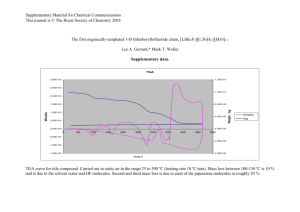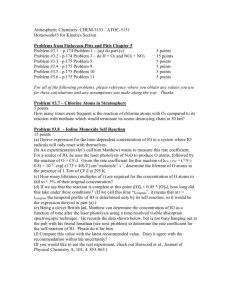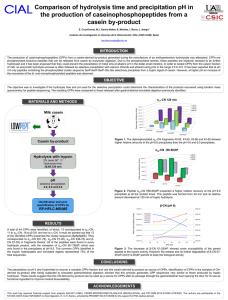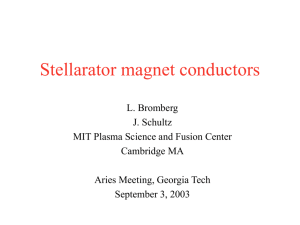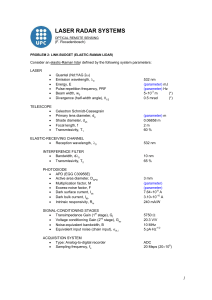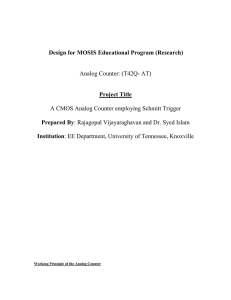Sample Lab Report
advertisement
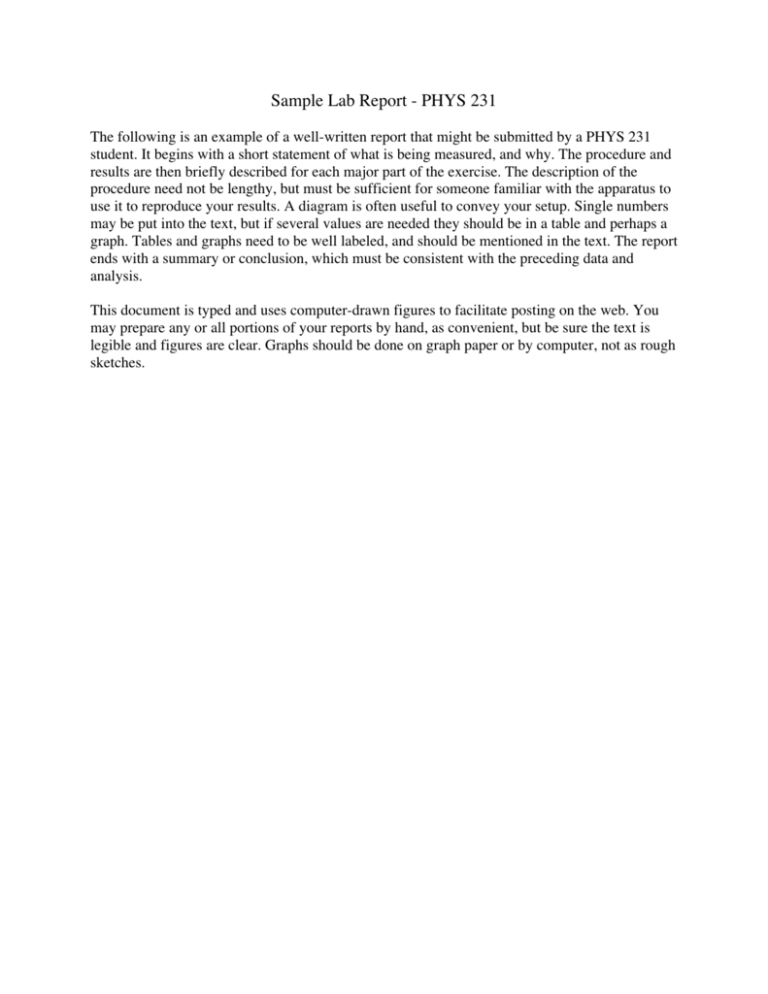
Sample Lab Report - PHYS 231 The following is an example of a well-written report that might be submitted by a PHYS 231 student. It begins with a short statement of what is being measured, and why. The procedure and results are then briefly described for each major part of the exercise. The description of the procedure need not be lengthy, but must be sufficient for someone familiar with the apparatus to use it to reproduce your results. A diagram is often useful to convey your setup. Single numbers may be put into the text, but if several values are needed they should be in a table and perhaps a graph. Tables and graphs need to be well labeled, and should be mentioned in the text. The report ends with a summary or conclusion, which must be consistent with the preceding data and analysis. This document is typed and uses computer-drawn figures to facilitate posting on the web. You may prepare any or all portions of your reports by hand, as convenient, but be sure the text is legible and figures are clear. Graphs should be done on graph paper or by computer, not as rough sketches. PHYS 231 Experiment 3.14159 RC circuits by A. Student with O. K. Partner Submitted February 30, 2753 Introduction We studied the voltage across a capacitor as it charged or discharged through a known resistor. The goal is to show that the charge/discharge follows an exponential function and that the time constant is R’C, where R’ is the effective resistance of the voltmeter and resistor in parallel. Procedure and Results for charge/discharge curves The circuits for charging and discharging the capacitor are sketched below. They are wired so that the initial fully charged or fully discharged state can be quickly reached in one switch position, and then the discharge or charge starts when the switch is set to the other position. A stopwatch was started when the switch was thrown, and the DMM read at known times until the voltage essentially stopped changing. R Power Supply Red + b a + C Black - - DMM Circuit for monitoring charging. Power Supply Red + Black - b a R + C - DMM Circuit for monitoring discharging. Results for charging and discharging, with marked values R = 1 MΩ and C = 100 µF, are shown in the attached graphs (from Graphical Analysis). The solid lines are fits to V*(1-exp(-T*x))+K charging V*exp(-T*x)+K discharging which were derived in the lab manual. These lines fit the data well, confirming that the charge and discharge are exponential. Procedure and Results for time constant Only the discharging circuit was used for this part. The capacitor was charged to 10.0 V and the time to discharge to 1/e of that value, 3.68 V, was measured with the stopwatch. The discharge was repeated two or three times and averaged to reduce error. This was done for both capacitors and again when connected in parallel. Resistor values were measured with the DMM instead of using the marked values. Data for the single capacitors is tabulated below R (ohm) 55.1K 106.7K 211.1K .494M 1.062M τ 100 µF (sec) too short 11.58, 11.20, 11.86 21.47, 22.25, 22.50 50.12, 50.35 100.87, 101.23 τ ave 100 µF (sec) 11.55 22.07 50.24 101.05 τ, 220 µF (sec) 13.72, 13.87, 13.56 25.95, 26.07, 25.256 50.47, 50.30 113.54, 113.65 too long τ ave220 µF (sec) 13.72 25.86 50.38 113.60 and for the parallel combination R (ohm) 55.1K 106.7K 211.1K .494M τ (100+220) µF (sec) 19.48, 19.44, 19.48 37.39, 37.28 72.02, 72.10 163.92 τ ave (sec) 19.47 37.34 72.06 163.92 The average time constant was plotted against the parallel resistance of the resistor and the meter, assumed to be 10MΩ. The results are in the attached graphs. Since we expect τ = R’C, the graphs should be straight lines with slope C. This appears to be the case, with values of C from the slope as tabulated: nominal capacitance (µF) from slope (µF) 100 105 ± 0.4 220 240 ± 0.4 320 347 ± 0.6 Note that the sum of the capacitances determined from the individual slopes is in good agreement with the capacitance from the slope of the parallel combination. Conclusion We have measured the charge and discharge of an RC combination. As expected, the charge/discharge voltage is exponential in time, with a time constant of RC. Capacitors connected in parallel have the sum of the individual capacitances. Graph 1 Data Set 1 10.0 9.60 9.20 8.80 8.40 8.00 7.60 7.20 6.80 6.40 V (volts) 6.00 5.60 5.20 4.80 4.40 4.00 3.60 3.20 2.80 2.40 2.00 1.60 1.20 0.800 0.400 0.00 0.00 50.0 100 150 200 Automatic Curve Fit on Data Set 1: f ( x ) = V*exp(-T*x) V= 9.89 Mean Square Error: +K T= 0.00985 0.000382 K= 0.0812 250 t (sec) 300 350 400 450 500 Graph 1 Data Set 1 9.20 8.80 8.40 8.00 7.60 7.20 6.80 6.40 6.00 5.60 V (volts) 5.20 4.80 4.40 4.00 3.60 3.20 2.80 2.40 2.00 1.60 1.20 0.800 0.400 0.00 0.00 50.0 100 150 200 Automatic Curve Fit on Data Set 1: f ( x ) = V*(1-exp(-T*x)) V= 8.85 Mean Square Error: +K T= 0.00990 0.000333 K= 0.0434 250 t (sec) 300 350 400 450 500 Graph 1 Data Set 1 Data Set 2 Data Set 3 165 160 155 150 145 140 135 130 125 120 115 110 105 100 tau (sec) 95.0 90.0 85.0 80.0 75.0 70.0 65.0 60.0 55.0 50.0 45.0 40.0 35.0 30.0 25.0 20.0 15.0 10.0 0.00 1.00e+05 2.00e+05 3.00e+05 4.00e+05 Statistics: Slope Y Intercept C.O.R. Data Set 1 0.000105±4.33e-07 0.550±0.237 1.00 Data Set 2 0.000240±3.79e-07 0.582±0.100 1.00 Data Set 3 0.000347±6.23e-07 0.504±0.164 1.00 5.00e+05 6.00e+05 Reff (ohms) 7.00e+05 8.00e+05 9.00e+05 1.00e+06

